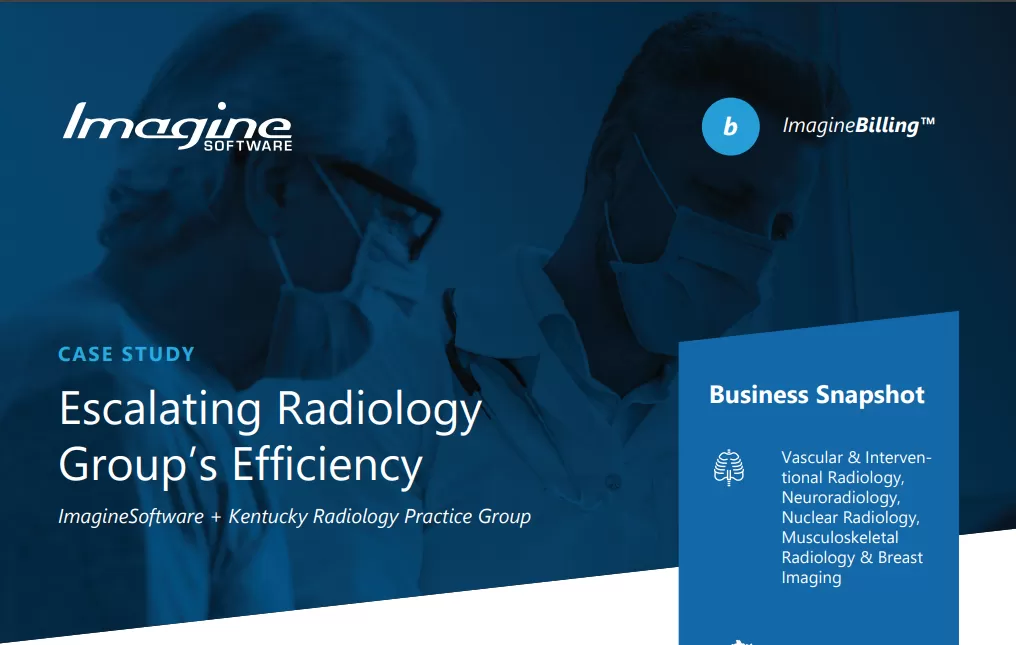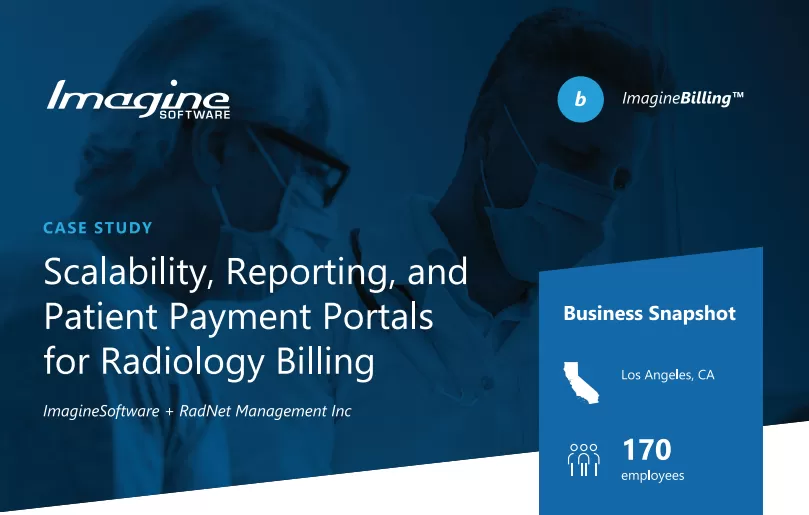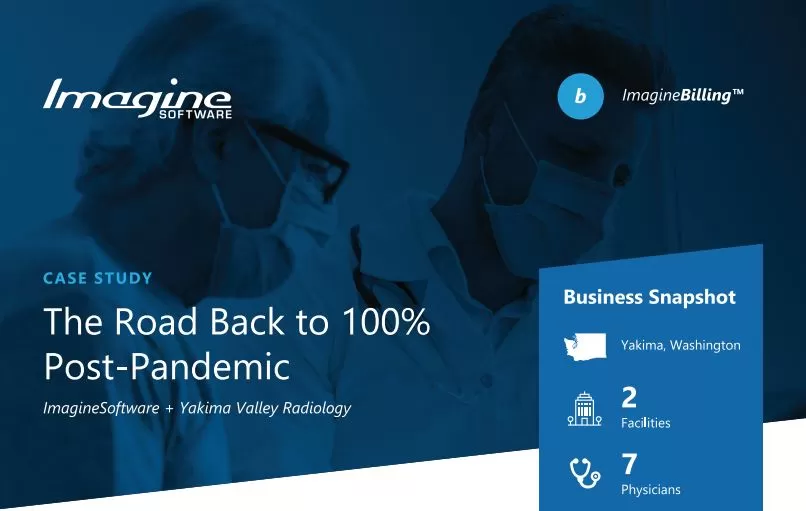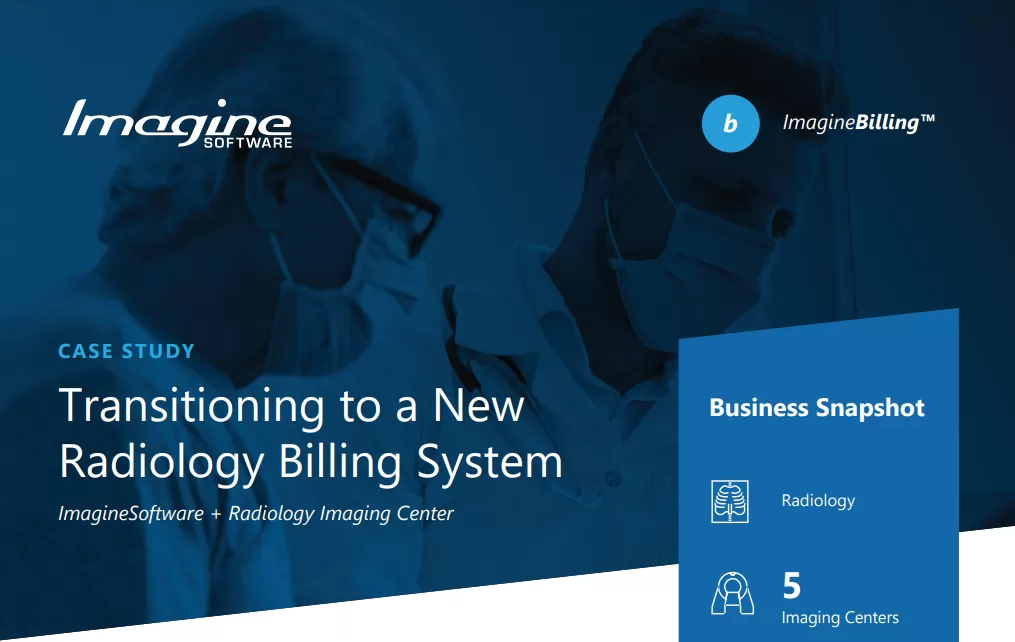Originally published July 30, 2019
AAPC defines medical coding as the transformation of healthcare diagnosis, procedures, medical services and equipment into universal medical alphanumeric codes. In financial terms, medical coding is the life blood of the practice. It's how the services you provide turn into billable revenue.
Failure to code correctly can lead to a myriad of problems, including delays, a lack of reimbursement and even fraud. However, by following industry best practices and radiology coding guidelines, you can maintain a healthy bottom line. We’ve compiled a few medical coding tips recommended by our team, pointers that also are very popular among many radiology billing organizations thought leaders!

The 3 C's of Documentation for Radiologists
To promote improved radiology billing and coding, it’s good practice to remember the three Cs of reporting and documentation: clarity, consistency and care. Along with radiologists, staff in the medical coding and billing departments should focus on these areas, especially because some of the most common radiology coding errors – those related to eligibility, referrals and dictation error – involve all of these groups.
Find out how RadNet Management, Inc., the largest provider of freestanding, fixed-site outpatient diagnostic imaging in the country, improved scalability and reporting.
Dictated reports should be concise and clear. A format suggested by the American College of Radiology (ACR) for reporting includes:
- Demographics
- Relevant Clinical Information
- Body of the Report
- Findings
- Impression (conclusion or diagnosis)
- Standardized computer-generated template reports
Clinical indications, the performed exam, impressions and findings should all be clearly identified. Following are the ACR’s Principles of Reporting:
- The final report is the definitive documentation of the results of an imaging examination or procedures
- The final report should be proofread. Use of abbreviations or acronyms should be limited to avoid ambiguity.
- The final report should be completed in accordance with appropriate state and federal requirements. Electronic or rubber-stamp signature devices, instead of a written signature, are acceptable unless contrary to state law, if access to such devices is secure.
- The final report should be transmitted to the referring physician or health care provider in accordance with the appropriate state and federal requirements. The referring physician or other relevant health care provider also shares in the responsibility to obtain results of imaging studies ordered.
- When feasible, a copy of the final report should accompany the transmittal of relevant images to other health care professionals when such images are requested.
- A copy of the final report should be archived by the imaging facility as part of the patient’s medical record and be retrievable for future reference. Retention and distribution of these records must be in accordance with state and federal regulations and facility policies. The final report and images should be available to the patient upon request after obtaining appropriate consent by the patient or other legally authorized person acting on their behalf.
Only Report Documented Views
The number of views claimed must meet the basic requirements of the Current Procedural Terminology (CPT®) code reported. The medical report should include the number of views, and it’s the coder’s responsibility to count the number of views and select the corresponding CPT code.
If a physician includes view location instead of view number, that is an acceptable form of documentation. The AAPC provides a great example of this: for a 73564 Radiologic examination of the knee with four or more views, the documentation must substantiate the number of views. If instead of listing “four views,” the physician states, “AP, lateral and both obliques,” that is acceptable. However, if the physician states, “multiple views of the knee,” the coder must report the lowest-level corresponding CPT code for that service.
If your department has a list of “standard views,” coders must proceed with caution when using them. For example, if a referring physician doesn’t include the number of views in the order, the coders can’t impose their standard views. The radiology department should instead contact the referring physician and request a new order that includes the number of views that the referring physician would like performed.
If your department has a list of “standard views,” coders should proceed with caution when using them. For example, if a referring physician doesn’t include the number of views in the order, the coders can’t impose their standard views. The radiology department should instead contact the referring physician and request a new order that includes the number of views that he or she would like performed.
Complete Documentation for a Complete Exam
For all “complete” studies, there must be complete documentation supported. Otherwise, coders must code down to the limited exam. For example, if a complete abdominal study is completed, there should be documentation for all of the following: liver, gallbladder, common bile duct, pancreas, spleen, kidney, upper abdominal aorta and inferior vena cava.
Implement New 2022 Codes
The fiscal year (FY) 2022 ICD-10-CM Official Guidelines for Coding and Reporting go into effect on October 1, 2021. The newest update from the Centers for Medicare & Medicaid Services (CMS) includes 159 additions, 25 deletions and 27 revisions.
On September 7, 2021, the American Medical Association (AMA) released the 2022 CPT code set, which will go into effect on January 1, 2022. According to the AMA, COVID-19 vaccine and administration codes are among 405 editorial changes in the 2022 CPT code set, including 249 new codes, 63 deletions and 93 revisions.
Include Proper Modifiers
One of the biggest issues in radiology in coding-specific lost reimbursement is the use of incorrect modifiers or none being used when required. Coders should refer to the National Correct Coding Initiative (NCCI) to determine if modifiers are necessary.
CMS created the NCCI to promote national correct coding methodologies and control improper coding leading to inappropriate payment in Part B claims.
Radiology procedures include both professional and technical components represented by modifier 26 and modifier TC, respectively. The professional component (Modifier 26) of a diagnostic service or procedure should be appended to a procedure code when only the professional service was rendered and is provided by the physician. This may include supervision, interpretation and a written report.
The technical component (Modifier TC) of a diagnostic service or procedure should be appended only when the technical service was rendered and represents the equipment, supplies and clinical staff. Payment for the technical component also includes the practice and malpractice expenses.
Both should be reported in the first modifier position on the claim. If the same provider is performing both components, the “global” service should be reported, and no modifiers are necessary to receive payment for both components.





